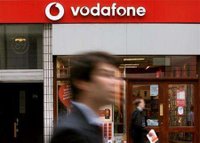The phone rings. You answer and there’s that tell-tale two seconds of call-centre ambience before you are greeted by name:
"We’re just doing a 40-second survey on holiday habits…"
"Just a quick survey about people’s telephone services…"Don’t be fooled: not everything that’s a "survey" is research. Depressingly often, it’s what the market research industry calls sugging (a loose acronym for "selling under the guise of research"), fugging ("fundraising…") or dugging ("databasing…").
Although long recognised as abusing the rights and trust of the public and often constituting misleading and deceptive conduct under Section 52 of the Trade Practices Act, sugging and its fellow travellers appear to be on the increase in Australia. In the past week alone, I have received three sugging calls at home, and it’s a fair bet that many of the hang-ups on my answering machine were also from suggers.
The classic example of sugging is the call that starts with "We’re just doing a survey in your area…" and eventually, either during the same call or a few days or weeks later, leads to an approach, invitation or straight-out sales pitch.
Sometimes you’re told you will go into some kind of prize draw to thank you for participating in the "survey". Sure enough, a few days or weeks later, there’s a second call and – wowee! – you won a weekend away at a timeshare resort. Of course, there’s a catch: in order to claim your prize, you have to attend a lengthy sales presentation and agree to be hassled for months if not years to come.
More disturbing is the call that purports to be a survey but actually consists of a series of increasingly leading or pushy questions about your current phone bill or mortgage repayments. Most consumers will recognise that a question like "Were you aware there’s now a way that you can save thousands on your mortgage?" is not legitimate market research. But by this stage, it’s often too late – you’ve already taken the bait, voluntarily divulged some personal information and you’re on the back foot.
Other times, you are called a few weeks later and actually reminded of the responses you gave. "Remember you told us X and Y about your preferred holiday destination? Well, we thought you might be interested in this once-in-a-lifetime opportunity..."
This would be a contemptible breach of privacy and ethical provisions in genuine research, which is undertaken on the basis that complete anonymity of the research respondent is strictly preserved. As the code of the Australian Marketing and Social Research Society (AMSRS) makes clear, any situation in which the identity and personal details of the people contacted are to be used for individual selling, promotional, fundraising or other non-research purposes "can under no circumstances be regarded as market research".
My own experience this week suggests that, like other forms of telemarketing, sugging calls can come from on-shore and off-shore sites. A call I received from the Stingray International Survey Centre – which was presented as a "quick survey" on my telephone use – came from the Mercury Blue telemarketing call centre in Mount Barker, South Australia. The caller did not and could not tell me how my data were going to be used, what were my rights under privacy provisions, or who was the sponsor of the research. Neither could (or would) the "supervisor".
The Mercury Blue website describes their outbound call services as including "direct sales campaigns, database updates, qualified appointment setting, surveys, database management, after sales customer service calls (and) product up-selling". Perhaps needless to say, Mercury Blue is not listed as a member of the Association of Market & Social Research Organisations (AMSRO).
The "40-second survey on holiday habits" was a call from a telemarketing organisation in Angeles City, Philippines, whose operator and "supervisor" were unable to understand my simple questions about the integrity of my personal information and the uses to which my data would be put. Off-shore suggers may be more problematic: do the misleading and deceptive conduct provisions of the Australian Trade Practices Act apply to a call placed from overseas on behalf of an overseas company, and can the Act be enforced in these circumstances?
But even if suggers are caught and punished by the law, and consumers recognise when they’ve been sugged, fugged or dugged, there’s a significant downside for the market research industry. Those who’ve been burned by suggers are much more likely to reject future requests to participate in genuine research.
Research conducted by the AMSRS has shown that Australian consumers are broadly supportive of genuine research and do differentiate between telemarketers and market researchers, but sugging muddies the waters by deliberately blurring this distinction. Some research fieldworkers are reporting increasing resistance from consumers who feel they’ve been misled and no longer known who to trust when it comes to "surveys".
The biggest problem is that almost all sugging goes unreported. Unsolicited calls of any kind are viewed by consumers not only as a nuisance but with increasing disgust and anger, but few can be bothered taking the additional time and effort either to check the bona fides of a purported research call with the AMSRS Surveyline (1300 364 830) or to report offenders to the ACCC.
Authorities like the ACCC must step up proactive efforts to detect and stop suggers and to alert consumers to the problem. It’s time we all told these offenders to take their fugging "surveys" and shove ‘em.












